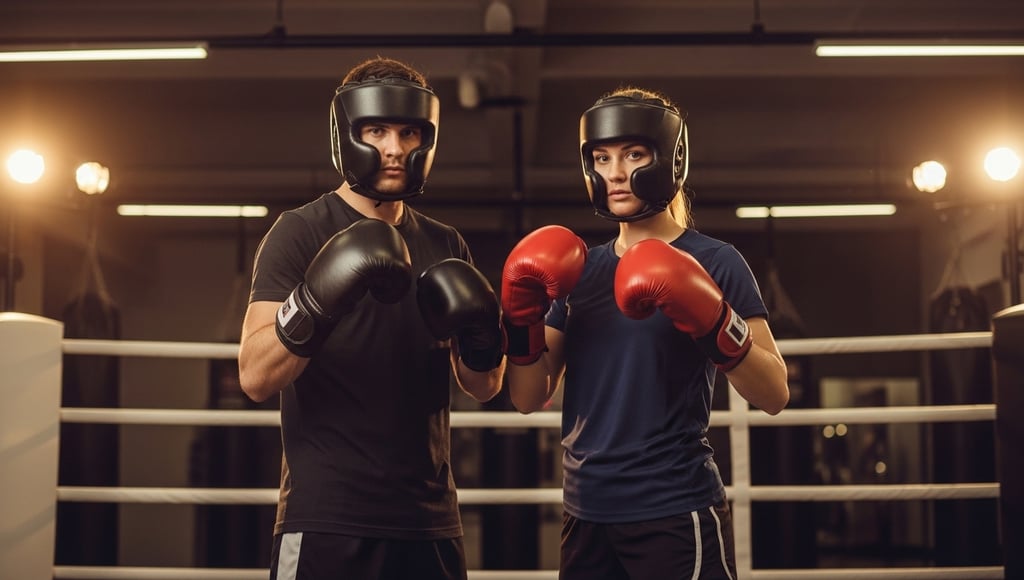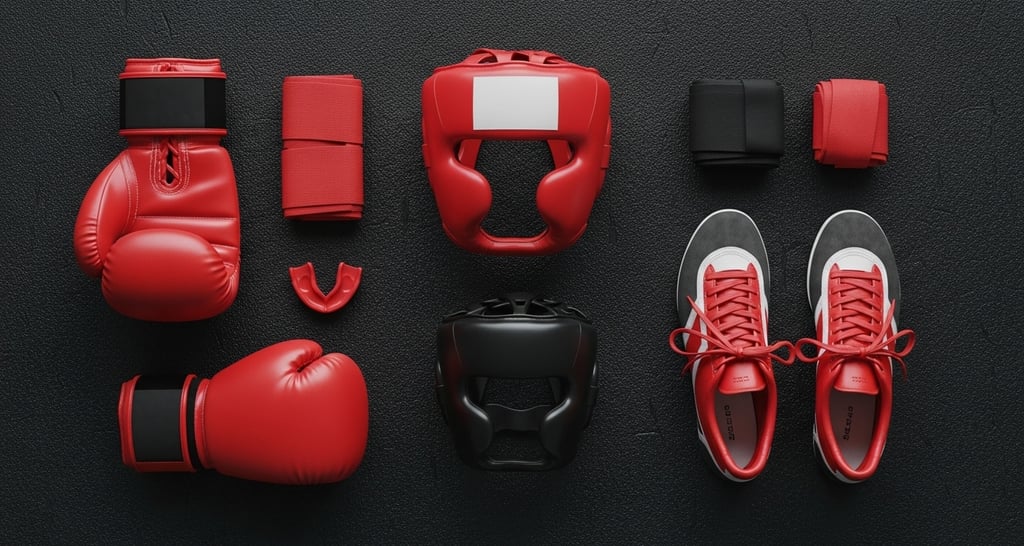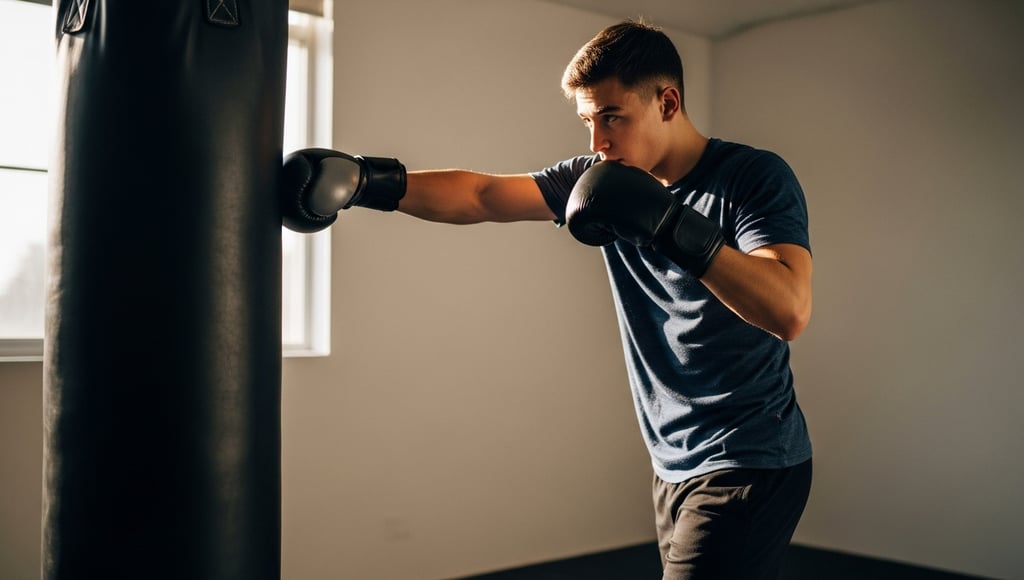What Do You Need for Boxing? A Complete Beginner's Guide
New to boxing? Learn what gear you need—from gloves to shoes—and get essential tips to start your training the right way.
6/10/20255 min read


Boxing is one of the most physically demanding and mentally rewarding sports. Whether you’re planning to become a competitive fighter or just want to train for fitness, knowing what gear and equipment you need is the first step. In this comprehensive guide, we’ll walk you through everything you need for boxing—from essential equipment and gear to optional accessories and training tips.
Why Proper Boxing Gear Matters
Before we dive into the list, let’s talk about why having the right gear is so important. Boxing is a high-impact sport that involves powerful punches, quick movements, and constant physical exertion. The right equipment ensures:
Safety: Protects your hands, face, head, and body from injury.
Performance: Enhances your technique and comfort.
Longevity: Keeps your gear and your body in good shape for longer.
Essential Equipment for Boxing
Let’s start with the must-have items every beginner needs.
1. Boxing Gloves
Purpose: To protect your hands and your opponent or training partner.
Types:
Training Gloves: All-purpose gloves for bag work and pad training.
Sparring Gloves: Heavily padded to minimize injury during sparring.
Bag Gloves: Specifically designed for heavy bag workouts.
Pro Tip: Choose gloves based on your weight class and training type. Typically, 12oz to 16oz gloves are used for training.
2. Hand Wraps
Purpose: To provide wrist support and protect the knuckles and fingers.
Why You Need Them:
Reduce the risk of fractures or sprains.
Help maintain glove shape and hygiene.
Length Options: 120” for smaller hands, 180” for average to large hands.
3. Mouthguard
Purpose: To protect your teeth and jaw during sparring or competition.
Types:
Boil-and-bite mouthguards (most common and affordable).
Custom-fit mouthguards (professionally made, offer better protection).
4. Headgear
Purpose: To reduce cuts, bruises, and impact during sparring.
Note: Headgear does not prevent concussions, but it helps absorb some blows.
Look for adjustable straps and adequate padding for cheeks, forehead, and chin.
5. Boxing Shoes
Purpose: To provide ankle support, agility, and traction in the ring.
Features to Look For:
Lightweight design
Thin sole for ground feel
High-top for ankle support
6. Punching Bag
If you're training at home, a heavy bag or freestanding punching bag is essential.
Types:
Heavy Bags: Good for power training and combinations.
Speed Bags: Improve hand-eye coordination and timing.
Double-End Bags: Great for reflex training and defense.
7. Skipping Rope (Jump Rope)
Purpose: To build footwork, cardio endurance, and rhythm.
A durable leather or speed rope is ideal for boxing training. Jumping rope is a staple of every boxer’s conditioning routine.
Optional But Recommended Gear
Once you’ve got the basics down, you can consider these useful additions.
1. Groin Protector
Mandatory for men in sparring and amateur bouts. Women can use a chest guard for similar protection.
2. Boxing Timer
Keeps track of your rounds and rest periods. Helps structure your workouts more effectively.
3. Focus Mitts / Pads
Used with a partner to practice combinations, speed, and accuracy. Ideal for personal trainers or gym partners.
4. Reflex Ball or Headband Trainer
Great for improving reflexes, timing, and coordination. Compact and easy to use at home.
5. Gym Bag
A dedicated gym bag keeps all your boxing gear organized and clean. Look for one with separate compartments for sweaty gear and shoes.
Boxing Clothing and Apparel
Wearing the right clothing can improve comfort and performance.
1. Boxing Shorts
Designed for mobility, breathability, and comfort. Elastic waistbands and a lightweight fit are key.
2. Moisture-Wicking Shirt or Tank
Avoid heavy cotton shirts. Instead, go for breathable, sweat-resistant training shirts.
3. Compression Gear
Helps with muscle support, reduces fatigue, and minimizes soreness.
4. Towel and Water Bottle
Stay hydrated and keep sweat out of your eyes during long sessions.
Training Accessories and Recovery Tools
1. Resistance Bands
Useful for strength and speed training. Great for warming up or adding intensity to workouts.
2. Foam Roller or Massage Gun
Aids in muscle recovery, reduces soreness, and prevents injury.
3. Boxing App or Training Journal
Track your progress, monitor performance, and keep notes on your workouts and goals.
Home Boxing Setup (If You're Not Going to a Gym)
If you're training at home, here’s a quick setup list:
Wall-mounted or freestanding heavy bag
Skipping rope
Mirror (to monitor form)
Floor mats
Adjustable timer app or wall timer
Resistance bands or light dumbbells
Tips for Beginners Before You Start
Get a Coach or Join a Gym: Learning the fundamentals from a professional is crucial.
Work on Conditioning: Boxing is 80% cardio and endurance.
Don’t Skip Technique: Proper footwork and stance matter more than power.
Be Consistent: Improvement takes time—stick to a routine.
Invest in Quality Gear: Cheap gear wears out fast and can lead to injury.
Where to Buy Boxing Gear
You can find boxing gear online, at sporting goods stores, or from specialized combat sports brands. Look for brands known for quality, such as:
Everlast
Ringside
Title Boxing
Venum
Hayabusa
Inspiracion MFG– a Manufacturer offering reliable and affordable and custom combat sports gear with your branding.
Always check sizing guides, product reviews, and return policies when shopping online.
Final Thoughts: Get Ready to Train Like a Champ
Boxing is more than just throwing punches—it's a discipline that trains your body and mind. By equipping yourself with the right gear, you'll set yourself up for success whether you're boxing for fitness, fun, or competition.
Invest in good equipment, train smart, and most importantly—enjoy the journey. With the right tools and mindset, you’ll be on your way to becoming a stronger, faster, and more confident version of yourself.
Frequently Asked Questions (FAQs)
Q1: Can I start boxing without going to a gym?
Yes, you can start at home with basic equipment like gloves, a heavy bag, and a jump rope. However, proper coaching is recommended for learning technique.
Q2: How much does it cost to get started in boxing?
Basic beginner gear can cost anywhere from $100 to $300 depending on quality and brand.
Q3: Do I need to spar to learn boxing?
Not initially. You can focus on fitness, bag work, and technique first. Sparring can be added once you’ve built skill and confidence.
Q4: What size gloves do I need?
For general training, 14oz–16oz gloves are ideal. Consult a size guide based on your weight and hand size.
Looking for reliable, affordable boxing gear? Contact us through email or whatsapp at Inspiracion MFG — where quality meets performance.
#BoxingGear #BoxingEssentials #BoxingTraining #CombatSports #BoxingLife #BoxingTips #BeginnerBoxing #BoxingWorkout #FightGear #BoxingEquipment #TrainHard #BoxingMotivation #BoxingFitness #BoxingForBeginners #BoxingReady #GlovesOn #BoxingJourney #BoxingLifestyle #BoxingFocus #HeavyBagTraining #WomenWhoBox #FemaleFighters #BoxingForWomen #GirlsWhoFight #BoxingEmpowerment #BoxingBeauty #FitWomenBoxing #BoxLikeAGirl #BoxingQueen #StrongWomenTrain #KidsBoxing #JuniorBoxer #YouthBoxing #BoxingForKids #LittleFighters #BoxingTrainingForKids #BoxingFamily #FutureChampion #SafeBoxing #KidsInCombatSports #HomeBoxing #TrainAtHome #GarageGymBoxing #BoxingFromHome #HomeWorkout #PunchBagWorkout #BoxingSetup #NoGymNoProblem #BoxingAnywhere #SoloBoxingTraining #BoxingForFitness #BoxingCardio #BoxingBurn #FitnessBoxing #BoxingHIIT #BoxingBodyWorkout #BoxToFit #FitWithBoxing #CardioBoxing #BoxingShred




Quality
Manufacturing top-notch combat sports equipment for businesses worldwide.
Menu
Accessible
© 2024. All rights reserved.


